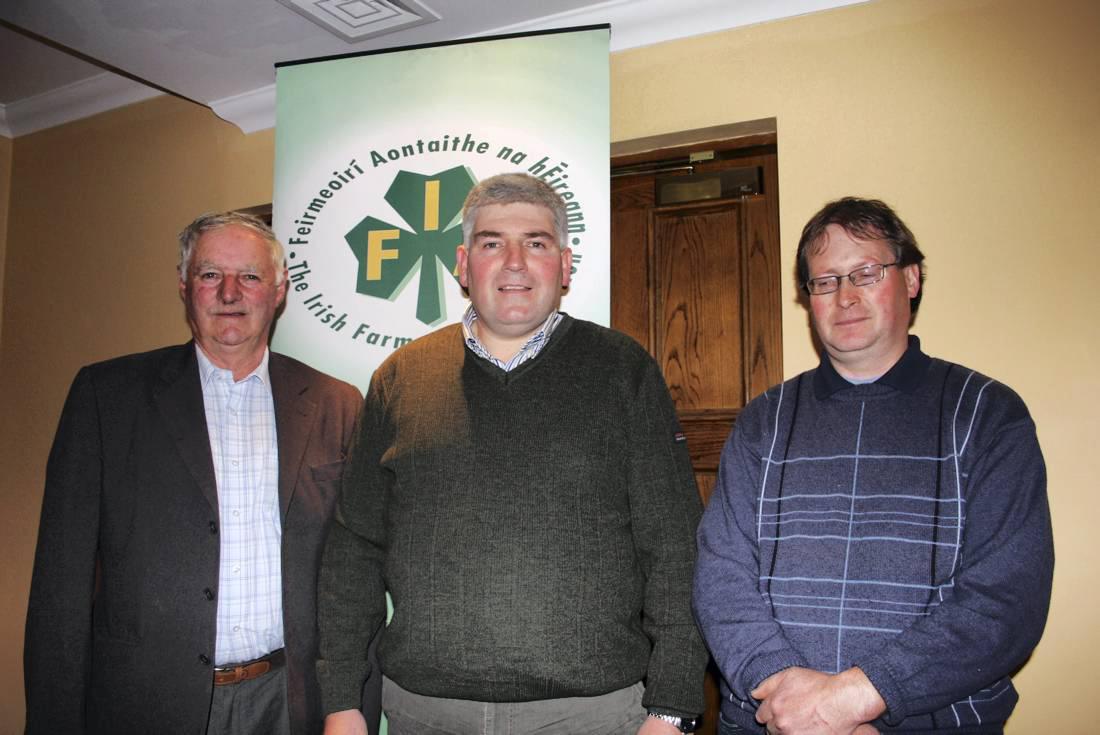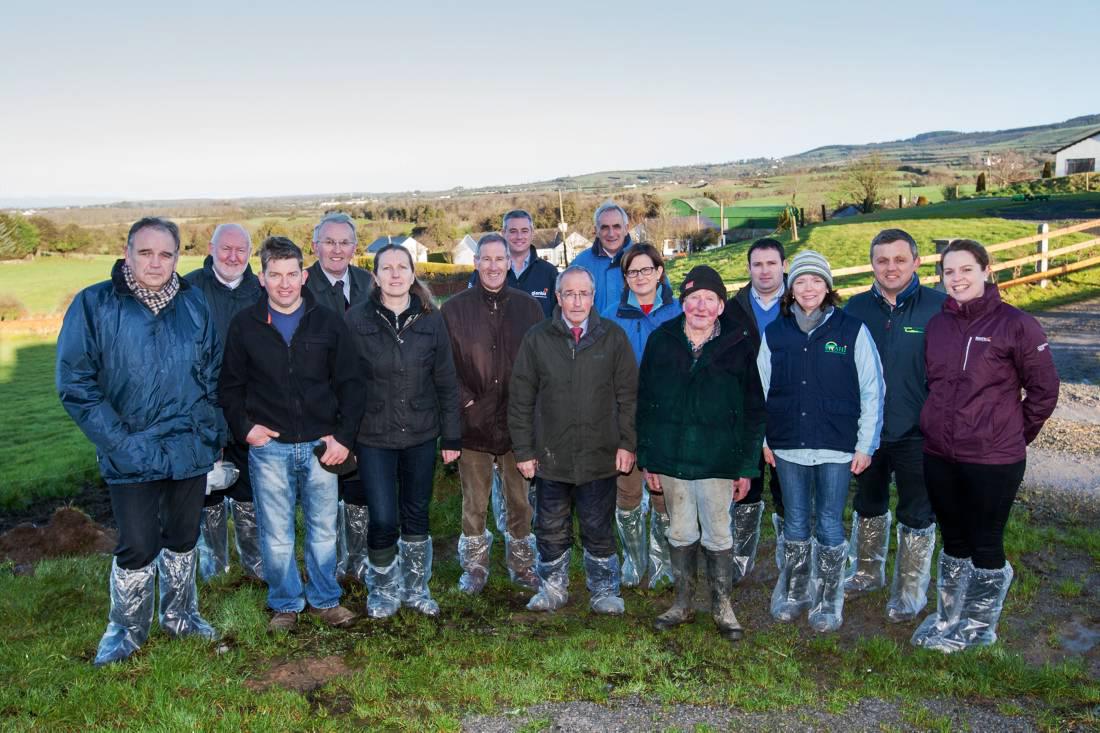Animal Health Ireland and Teagasc, in association with Glanbia, Kerry Agribusiness and Aurivo, will host a number of CalfCare events around the country in January, supported by Volac. Each event will run from 11am to 1pm with the last group going through at 12pm. The events will focus on five key areas:
1) Colostrum management: Speakers from Teagasc and the AHI Technical Working Group will outline the 1-2-3 rule of feeding colostrum.
1 Feed the first milk after calving.
2 Feed 2 litres.
3 Feed within three hours.
They will also outline how to determine colostrum quality along with other useful information.
2) Calf nutrition: Speakers will discuss the recommendation to feed 13-15% of calf birthweight, or about 6 litres of whole milk or 750g of solids per day.
3) Managing the scouring calf: Speakers will outline that scouring calves need to be isolated and fed an electrolyte solution along with milk to prevent dehydration.
4) Calf performance from weaning to mating: Teagasc specialists will outline the milestones in terms of weight targets for replacement heifers.
5) Biosecurity and managing Johne’s Disease at calving: Members of the AHI technical working group will outline key tips on reducing the risk of spreading Johne’s and maintaining high biosecurity on the farm.
Dates and Venues
16/01/2015 Nigel Bailey, Clough, Gorey, Co. Wexford
20/01/2015 O’Keeffe Family Farm, Churchclara, Kilkenny
21/01/2015 Tintur Dairy Farm, Cappoquin Estate, Cappoquin, Co Waterford
22/01/2015 Tommy Cahill, Tullore, Ballyroan, Portlaoise, Co Laois
26/01/2015 William Dennehy, Currow, Killarney, Co Kerry
28/01/2015 Martin Gilvarry, Killala, Co Mayo
29/01/2015 Richard Gregg, Convoy, Co Donegal
William and Mary Dennehy, Killarney, Co Kerry
William and Mary Dennehy farm near the village of Currow, not far from Killarney, Co Kerry. The system is spring-calving cows that go to grass as soon as possible after calving. Herd size has grown over the last number of years but it remains a family-run enterprise.
For the last number of years William has reared calves in loose sheds adjacent to the milking parlour, but the improved fertility and larger number of calves forced William to develop better facilities for rearing calves.
He said: “We were rearing and feeding over 100 calves in a place that was probably more suitable for rearing 30 calves. Small sheds with no room for calves is labour-intensive and time-consuming.” When I talked to William recently he was standing under the frame of a new calf shed. He said: ”We decided to put up a proper shed that will take the pressure off us in the spring and allow us hopefully to get the job done better and quicker.”
William is building what he described as a 52 square foot shed and he estimates the net cost will come in around €30,000. He said: “You could spend anything from €20,000 to €50,000 on a calf shed but what we need is something that is functional, practical and will do the job for those couple of months when there are young calves around the farm.”
Calves will be bedded on straw and in group pens that will hold eight to 10 calves depending on size. William will set up the pens so that they are 22ft long by 13ft wide. He plans to put a pole in the ground at 11ft so that calves can be locked into the back of the pen while the front is cleaned out and vice versa. All pens will be able to be cleaned out with the loader which will significantly improve hygiene and workload. The shed itself will have two 13ft doors allowing good wide access for machinery. William is one of the host farmers for the Teagasc/AHI Calf Care events.
Martin Gilvarry Killala, Co Mayo
Martin rears approximately 100 calves per annum and sells off all the Friesian bull calves. All heifer calves and some bull calves are kept and reared, therefore numbers vary annually.
In 2008 he built a new purpose-built shed for calving cows and rearing calves, which has benefited calf health.
Before this, the old calf rearing facilities would have been overcrowded. He has found that the new shed has much better ventilation and there has been less respiratory illness. Newborns are fed in single pens for a number of days. Once they are about a week old, they are then batched into pens of four to reduce labour.
They remain at the next stage for 10 days and are moved on accordingly into larger groups.
It is a simplified system – the main aim is to try to keep labour to a minimum while ensuring that calves are reared in a healthy environment.
“We use the teat system and you can quickly identify which calves need a little extra care and attention,” he said. “They can be caught early and treated accordingly.”
In some cases, poor feeders may need to be separated from the group and fed individually, or put in a group based on feeding speed.
“We started a programme several years ago where we vaccinate all breeding cows for lepto and BVD. We monitor the success of this programme through regular milk sampling.
“All calves are fed with our own milk, starting with colostrum within hours of birth. Following that they are fed on cow’s milk twice a day for approximately six weeks.
“Calf ration is introduced when they are a few days old with ad-lib access to hay and fresh water to help rumen development.
“After six weeks we reduce milk to once a day – this helps to encourage greater meal intake prior to weaning.”
Weather permitting, spring calves go to grass as soon as possible. They are normally turned out to a small sheltered paddock first to ensure they have adequate shelter from poor weather. Meal feeding is continued after weaning once per day.
Read more
Read the full Calf Focus supplement
Animal Health Ireland and Teagasc, in association with Glanbia, Kerry Agribusiness and Aurivo, will host a number of CalfCare events around the country in January, supported by Volac. Each event will run from 11am to 1pm with the last group going through at 12pm. The events will focus on five key areas:
1) Colostrum management: Speakers from Teagasc and the AHI Technical Working Group will outline the 1-2-3 rule of feeding colostrum.
1 Feed the first milk after calving.
2 Feed 2 litres.
3 Feed within three hours.
They will also outline how to determine colostrum quality along with other useful information.
2) Calf nutrition: Speakers will discuss the recommendation to feed 13-15% of calf birthweight, or about 6 litres of whole milk or 750g of solids per day.
3) Managing the scouring calf: Speakers will outline that scouring calves need to be isolated and fed an electrolyte solution along with milk to prevent dehydration.
4) Calf performance from weaning to mating: Teagasc specialists will outline the milestones in terms of weight targets for replacement heifers.
5) Biosecurity and managing Johne’s Disease at calving: Members of the AHI technical working group will outline key tips on reducing the risk of spreading Johne’s and maintaining high biosecurity on the farm.
Dates and Venues
16/01/2015 Nigel Bailey, Clough, Gorey, Co. Wexford
20/01/2015 O’Keeffe Family Farm, Churchclara, Kilkenny
21/01/2015 Tintur Dairy Farm, Cappoquin Estate, Cappoquin, Co Waterford
22/01/2015 Tommy Cahill, Tullore, Ballyroan, Portlaoise, Co Laois
26/01/2015 William Dennehy, Currow, Killarney, Co Kerry
28/01/2015 Martin Gilvarry, Killala, Co Mayo
29/01/2015 Richard Gregg, Convoy, Co Donegal
William and Mary Dennehy, Killarney, Co Kerry
William and Mary Dennehy farm near the village of Currow, not far from Killarney, Co Kerry. The system is spring-calving cows that go to grass as soon as possible after calving. Herd size has grown over the last number of years but it remains a family-run enterprise.
For the last number of years William has reared calves in loose sheds adjacent to the milking parlour, but the improved fertility and larger number of calves forced William to develop better facilities for rearing calves.
He said: “We were rearing and feeding over 100 calves in a place that was probably more suitable for rearing 30 calves. Small sheds with no room for calves is labour-intensive and time-consuming.” When I talked to William recently he was standing under the frame of a new calf shed. He said: ”We decided to put up a proper shed that will take the pressure off us in the spring and allow us hopefully to get the job done better and quicker.”
William is building what he described as a 52 square foot shed and he estimates the net cost will come in around €30,000. He said: “You could spend anything from €20,000 to €50,000 on a calf shed but what we need is something that is functional, practical and will do the job for those couple of months when there are young calves around the farm.”
Calves will be bedded on straw and in group pens that will hold eight to 10 calves depending on size. William will set up the pens so that they are 22ft long by 13ft wide. He plans to put a pole in the ground at 11ft so that calves can be locked into the back of the pen while the front is cleaned out and vice versa. All pens will be able to be cleaned out with the loader which will significantly improve hygiene and workload. The shed itself will have two 13ft doors allowing good wide access for machinery. William is one of the host farmers for the Teagasc/AHI Calf Care events.
Martin Gilvarry Killala, Co Mayo
Martin rears approximately 100 calves per annum and sells off all the Friesian bull calves. All heifer calves and some bull calves are kept and reared, therefore numbers vary annually.
In 2008 he built a new purpose-built shed for calving cows and rearing calves, which has benefited calf health.
Before this, the old calf rearing facilities would have been overcrowded. He has found that the new shed has much better ventilation and there has been less respiratory illness. Newborns are fed in single pens for a number of days. Once they are about a week old, they are then batched into pens of four to reduce labour.
They remain at the next stage for 10 days and are moved on accordingly into larger groups.
It is a simplified system – the main aim is to try to keep labour to a minimum while ensuring that calves are reared in a healthy environment.
“We use the teat system and you can quickly identify which calves need a little extra care and attention,” he said. “They can be caught early and treated accordingly.”
In some cases, poor feeders may need to be separated from the group and fed individually, or put in a group based on feeding speed.
“We started a programme several years ago where we vaccinate all breeding cows for lepto and BVD. We monitor the success of this programme through regular milk sampling.
“All calves are fed with our own milk, starting with colostrum within hours of birth. Following that they are fed on cow’s milk twice a day for approximately six weeks.
“Calf ration is introduced when they are a few days old with ad-lib access to hay and fresh water to help rumen development.
“After six weeks we reduce milk to once a day – this helps to encourage greater meal intake prior to weaning.”
Weather permitting, spring calves go to grass as soon as possible. They are normally turned out to a small sheltered paddock first to ensure they have adequate shelter from poor weather. Meal feeding is continued after weaning once per day.
Read more
Read the full Calf Focus supplement












SHARING OPTIONS